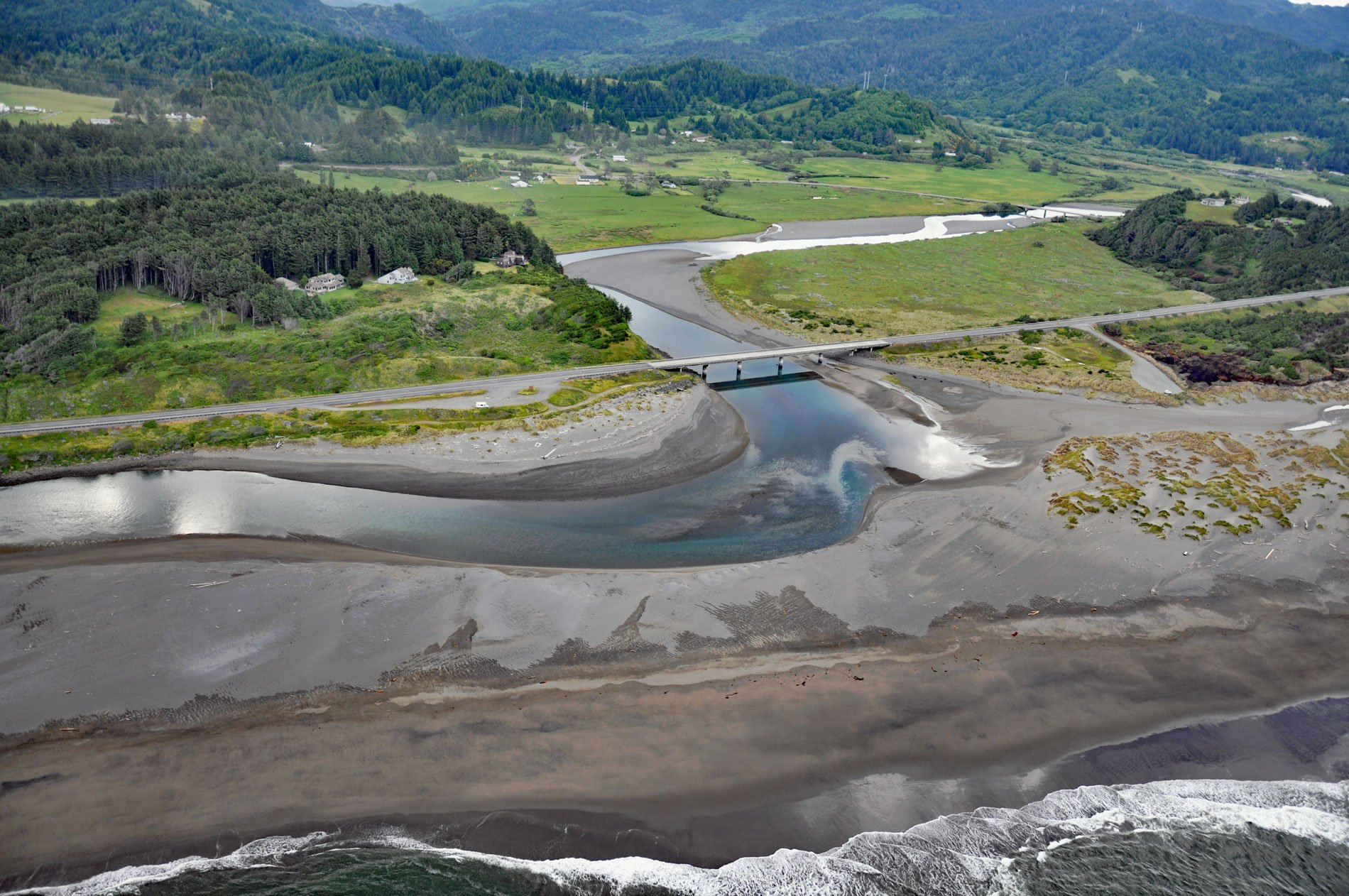Pistol River starts at an elevation of 3,179 feet (970 m) on the southern flank of Sugarloaf Mountain and drains a watershed of 67,200 acres (27,195 ha) in the Siskiyou National Forest while flowing generally southwest for 21 miles (34 km) to the Pacific Ocean near the community of Pistol River, about 17 miles (27 km) north-northwest of Brookings and 10 miles (16 km) south of Gold Beach, Oregon. The river is named for a pistol reputedly lost in the river by a militia soldier named James Mace in 1853. The flood plain of the Pistol River comprises Quaternary sediments transported from the Southern Oregon Coast Range. These sediments are derived from rocks in the Franciscan Complex that formed during the Jurassic and Early Cretaceous period, or about 200 to 100 million years ago. Rocks from the Yolla Bolly terrane are well represented in the Pistol River watershed and mostly comprise sandstone, mudstone, and conglomerate. The unconsolidated sediment of the lower river reach is partially responsible for the drastic historical channel shifts across the wide floodplain. The archaeological record of Chet-less-chunn-dunn, a village of the Pistol River band of Tolowa people, indicates it may have been moved repeatedly, likely in response to the shifting river channel.
The people of Chet-less-chunn-dunn were one of several groups that spoke the Chetco Tolowa language of the Athapaskan language. They became embroiled in the Rogue River Wars, an armed conflict from 1855 to 1856 between the U.S. Army supported by local militias and volunteers, and the Native American tribes commonly grouped under the designation of Rogue River Indians. The conflict was preceded by numerous skirmishes, as early as the 1830s, between Euro-American settlers and Native Americans over territory and resources. In March of 1856, a decisive battle against Euro-American settlers was fought here called the Battle of Pistol River. A group of 34 volunteers was besieged in an improvised log fortress for several days by Tolowa warriors. The village of Chet-less-chunn-dunn was eventually burned to the ground, and the Tolowa people were forced to move to reservations in Oregon and California. In central coastal Oregon, the Tillamook, Siletz, and about 20 other tribes were placed with Tolowa people at what is now known as the Siletz Reservation, located on land along the Siletz River about 15 miles (24 km) northeast of Newport, Oregon.
The coast of Oregon is characterized by some of the highest wave energy found anywhere in the world. The predominantly north-south orientation of the coast, the lack of offshore islands to help dissipate storm wave energy from the North Pacific, and the limited exposures of erosion-resistant bedrock, all contribute to relatively high rates of coastal erosion along the coast. The resulting sediment transport and constant onshore winds are primarily responsible for the dune building at the mouth of Pistol River between Crook Point to the south and Cape Sebastian to the north. The shifting river channel through the dunes has created many pothole ponds that attract waterfowl and shorebirds. The river supports populations of Chinook and coho salmon, steelhead, and coastal cutthroat trout. The river flows generally through forests where industrial logging has damaged fish habitat, and work to restore the habitat is ongoing. Pistol River State Scenic Viewpoint is a park that was acquired between 1962 and 1969 by purchase and litigation from various owners. One tract was given to the state in 1964 by Maytor H. and Vari McKinley of Los Angeles, California. Read more here and here. Explore more of the Pistol River and the Pistol River State Scenic Viewpoint here (map may take a few seconds to load):

